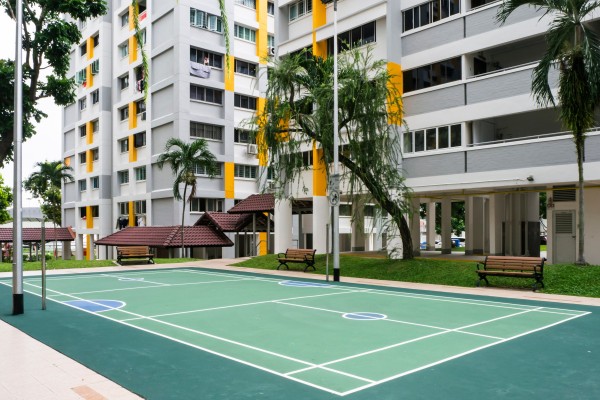Road Rules You Should Know Before Driving In Singapore


If you imagine that it’s comparatively a breeze to drive in Singapore given how meticulously well-planned our road networks are – you’re absolutely right.
After all, our traffic is generally smooth (certainly, if you know how jammed the roads can be in near-by cities like Bangkok, Jakarta, and Kuala Lumpur), the roads are rigorously maintained, and drivers are rule-abiding. You can even keep track of traffic conditions on Singapore roads in real time HERE, with updates on road works, vehicle breakdowns, and even faulty traffic lights.
But wait, have you also heard about just how rude and impatient Singaporean drivers can be? Or how they have a tendency to change lanes without so much as turning on their signal lights?
The name Singaporean drivers have earned for themselves is no mere urban myth either–a quick scan on forums like Reddit and Quora will show you just how unimpressed the rest of the world is with our drivers.
Nonetheless, knowing our road rules and prevailing driving etiquette will go a long way in helping you navigate our roads like a local.
Here are 10 road rules to familiarise yourself with before you hit the road. Buckle up, sit tight, and let’s get moving!
1. Left-hand drive
A vestige of Singapore’s colonial ties with Britain, Singapore drives on the left side of the road. Our cars are also designed for this, with the driver’s seat at the front right. This may be a big adjustment for you, especially if you’re used to driving on the right side of the road–like most of the rest of the world.
Our top tip for getting used to this is to drive much slower than you ordinarily would, nevermind the honking or impatient overtaking this might cause.
You will also want to pay special attention to turning out to a main road, because this will be particularly disorientating at the start. When in doubt, study what the car ahead of you does and repeat what you have observed out loud to yourself, to remind yourself to turn to the correct lane and the right direction.
2. Pay your tolls at Electronic Road Pricing (ERP) gantries

Most countries will have toll-booths set up at expressways or freeways, and Singapore is no different. The biggest difference is that there are no physical booths where you have to stop at and pay your toll–there are only huge gantries that are erected across certain sections of the roads, equipped with sensors to deduct the toll directly from a device in your car.
A card must be inserted into the device, with a cash value loaded into it, for the toll to be paid. This toll system is known as the Electronic Road Pricing system.
If you don’t have sufficient value in your card to pay the toll, you will not be prevented from driving or stopped on the road. However, you will be fined for this, and you must pay the fine or you may end up going to jail.
3. Overtake on the right
Keep on the left-most lane while driving at cruise mode, and use the right lane to overtake or if you’re turning right. Once you’ve overtaken the vehicle you wanted to by-pass, it’s best to go back to driving on the left lane, to avoid inadvertently hogging the road.
This rule applies on all roads in Singapore, including the expressways.
4. Give way to pedestrians at zebra crossings
Here in Singapore, pedestrians have the right of way at marked zebra crossings and when the green man crossing light is on–so you will need to come to a complete stop to let them walk safely.
There are usually zig-zag lines marking the side of the road in the lead-up to a zebra crossing, to give you ample time to slow down.
5. Take note of bus lane hours

Priority bus lanes are a big thing on our Singapore roads, because we want to keep our public transport going smoothly, even during peak periods on the road. These lanes allow buses to keep moving, even when there is traffic congestion on the other lanes. It’s important to therefore remember the bus lane operating hours, and steer clear of the marked lane during these hours, or risk getting fined.
The bus lane is often the left-most lane marked out with a thick yellow or red line, with the word “BUS” painted on the road.
There are two types of bus lanes that you’ll see when driving around: Full Day Bus Lanes (which operate from 7.30am to 11pm every day except Sundays and Public Holidays), and Part Day Bus Lanes (which operate from 7.30am to 9.30am and 5pm to 7pm on weekdays, except Public Holidays).
If you have to filter left, you may filter into the bus lane where the road is marked with a broken line. Road etiquette requires that you do this shortly before you have to make the turn, at the last possible line break, but please do so safely.
6. Strict speed limits
The speed limit on most roads in Singapore is 50km/h, unless otherwise stated.
Special School Zones (areas near schools) and Silver Zones (areas with a higher population of elderly people living) have lower speed limits of 40km/h, to create a safer environment for school children and elderly folk to cross the road. These zones are always marked out with signs, road markings, and bends in the road to slow your vehicle down.
Expressways have slightly higher speed limits of 80km/h or 90km/h.
Do note that there are speed cameras in operation on the expressways as well–you’ll know where they are by the signs stating “Speed Camera Ahead”, and you will be duly fined if you’re caught speeding on those cameras.
7. Zero-tolerance for drink driving
As with almost every other country in the world, Singapore has very strict laws on drink driving. That’s because driving under the influence can cloud your judgement, impair your reactions, and make you unduly reckless.
Drivers who are caught with more than 35mg of alcohol per 100ml of their breath will face a jail term of up to 12 months, a hefty fine of up to SGD$10,000, or both.
In spite of these laws, there are still too many serious or fatal accidents caused by drink driving violations; there were 175 such cases reported in 2022.
8. Discretionary right turns

If you want to make a right turn at a junction with a green light but you do not see a corresponding arrow, can you still do so? The answer is yes, you may do so at your discretion.
This practice is known as a discretionary right turn. While there are still instances of this in Singapore, it’s becoming increasingly less common as the Land Transport Authority (LTA) of Singapore is installing more arrows to make it safer for drivers to turn.
If you’re faced with having to make a discretionary right turn, don’t stress out. Inch your way out to the road pocket and only make the turn when you can see that there are no oncoming vehicles. Do not turn if your view is obstructed by a larger vehicle from the oncoming lane–never mind the irate honking from vehicles behind you. It’s definitely better to be safer than hurt.
9. Mandatory seat belts and child seats
Seat belts are a must for every person in a car, driver and passengers alike, wherever you sit in the car. Singapore’s seat belt laws are not strict when compared with countries like Australia or the United States, but that doesn’t mean they aren’t enforced.
Contrary to popular belief, traffic policemen do stop cars if not everyone is buckled safely in, and each offender is fined up to SGD$120. Drivers are also slapped with 3 demerit points on top of the fine (take note that your licence will get suspended for 12 weeks if you accumulate 24 or more demerit points within 2 years).
Child seats are also mandatory for all cars in Singapore. Every child below the height of 1.35m tall must be restrained in an appropriate car seat–yes, even newborns when it may feel easier to carry them in your arms.
Click HERE to read more about choosing the correct car seat for your child, according to his or her height and weight.
10. Park only at designated car parks and lots

Finally, you should only park your cars at designated parking lots. These parking lots will be marked out and numbered, with the corresponding parking costs clearly displayed on signboards in the vicinity. You can pay for parking at public car parks either via the Parking.sg mobile app (for open air car parks), or using a stored value card (for gantry car parks).
While it may be tempting to park your car at quiet stretches of roads for short periods of time, thinking that you’re not obstructing any traffic or inconveniencing anyone, do note that doing so may result in a fine, demerit points, or both–depending on the road markings or the proximity to a junction, the entrance to someone’s house, a bus stop, or a fire hydrant.
Familiarise yourself with the rules HERE, but remember, when in doubt, drive on to find a public car park–there’re many in Singapore.
If you’re still nervous about driving in Singapore, these guides will help put your mind at ease:
-
Navigating Traffic Scenarios Safely (A Guide for Cyclists and Motorists) by the Land Transport Authority (LTA)
-
The Basic Theory of Driving: The Official Handbook by the Singapore Police Force
One last thing: We’re assuming you already have a valid driving licence from your home country that’s recognised by Singapore, or that you’re in the process of converting your licence–because you definitely require a driving licence to drive in Singapore, as with almost every other country in the world. However, if you’re here for less than 12 months, you don’t actually need to convert your licence–find out more HERE.
What do our customers say?


































